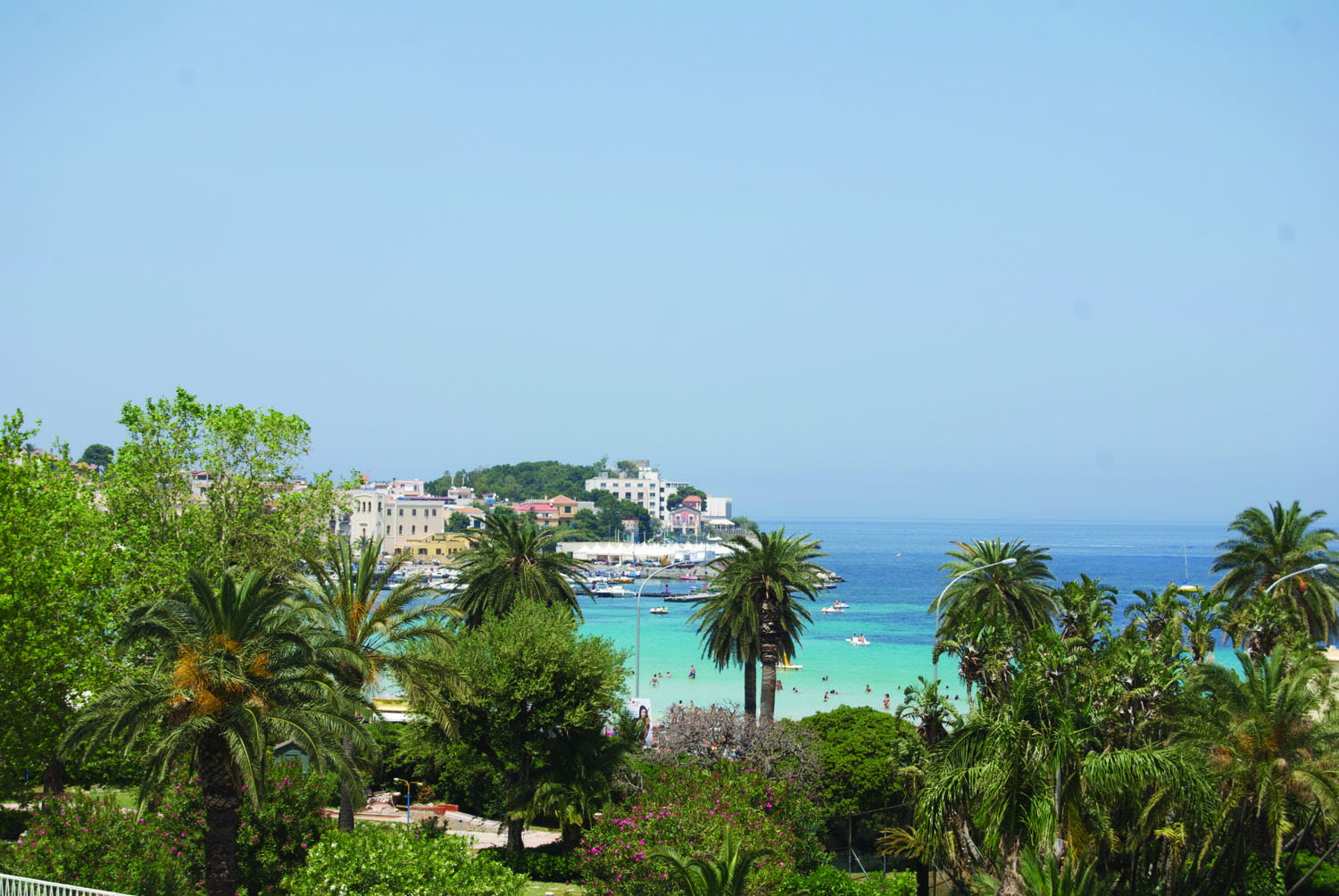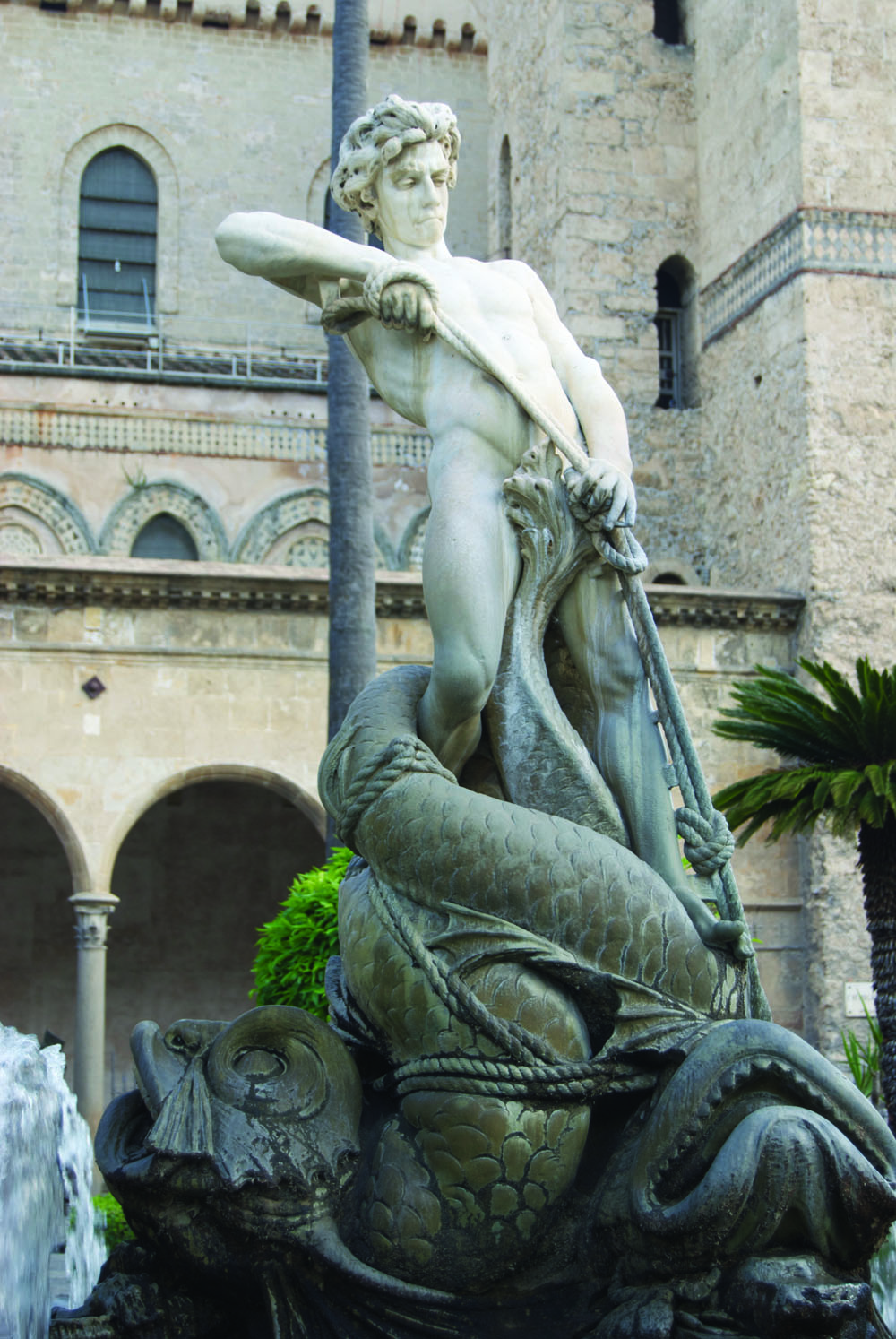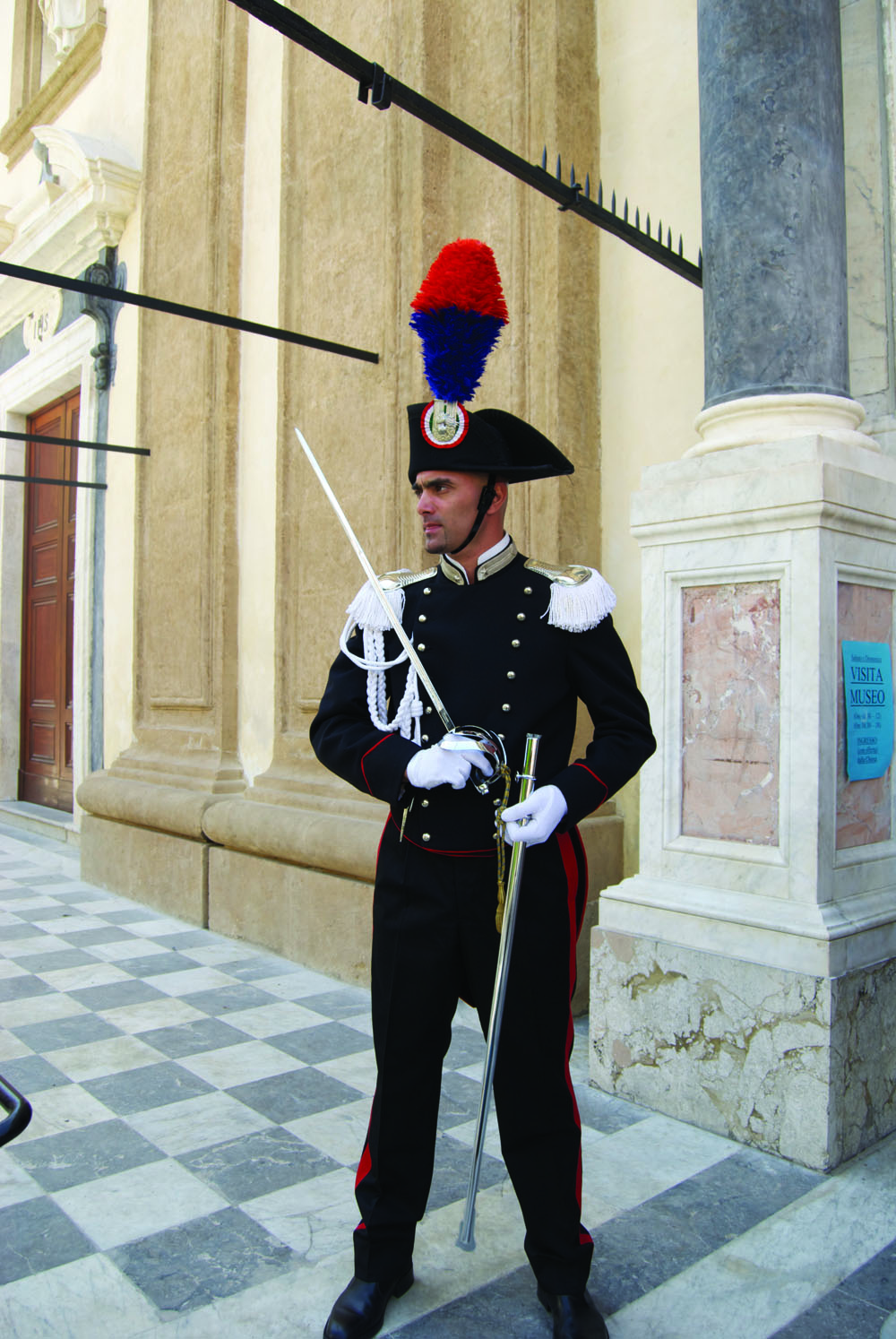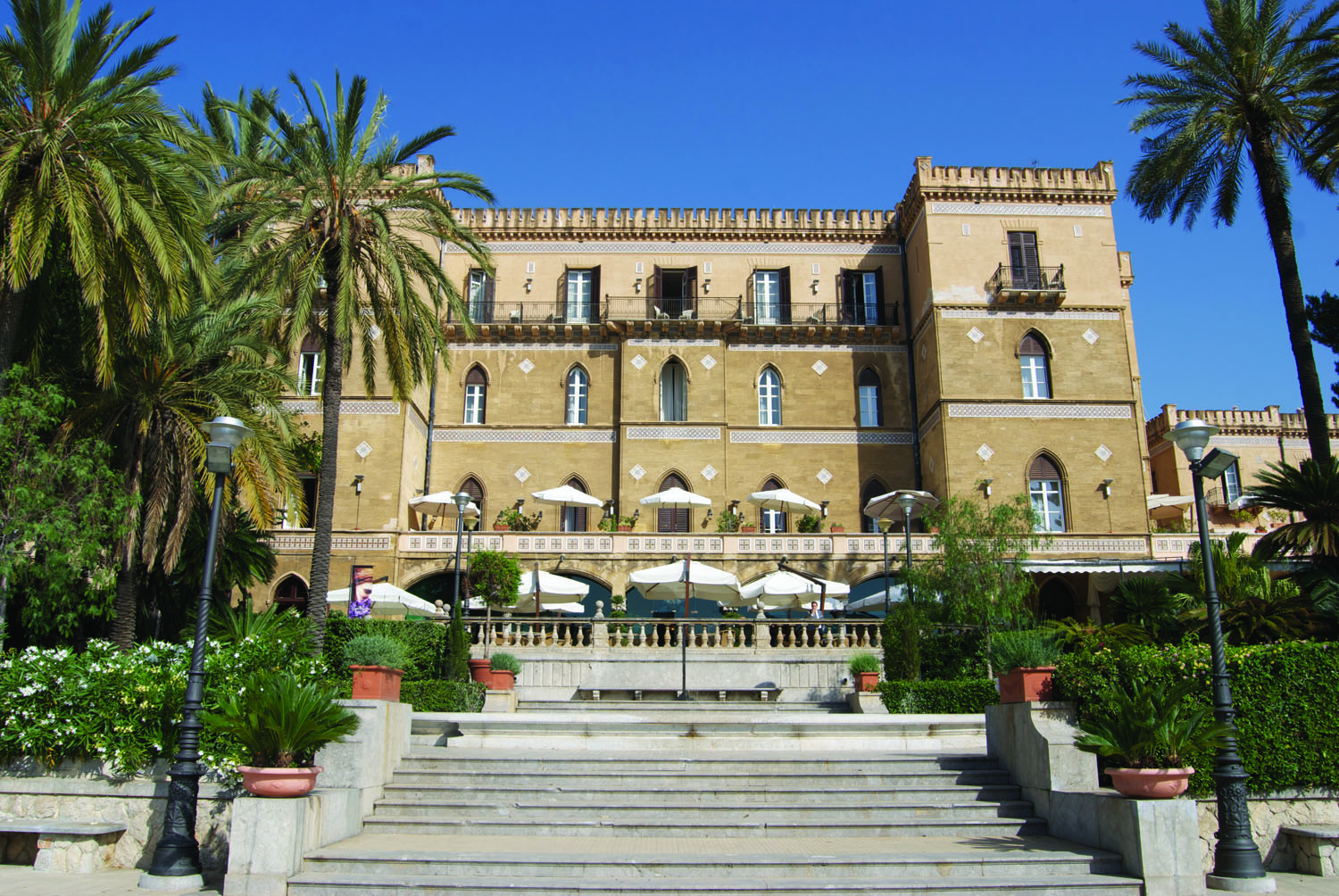Each region of Italy is unique, but there is none quite so different to the rest of the country as Sicily. James Miller finds he can’t keep away from its capital city…

They say that Italy is a diverse cultural tapestry. Each region can be considered a country in its own right. There is one region that exemplifies this theory perhaps more than others, Sicily. Italy is undoubtedly a land bursting with creativity and emotion and numerous trips to Palermo, Sicily’s capital, have taught me that Sicily epitomises these characteristics. My love affair with the island started some eight years ago with my first visit to Palermo and its environs. The cultural intensity of the city and its crumbling beauty was so intoxicating that I’ve been returning ever since. As the plane descended past the impossible blue of the sea and approached the jagged and dramatic mountains surrounding Falcone-Borsellino Airport, I felt a familiar sense of anticipation that once again I would soon be experiencing these chaotic and stimulating ancient city streets.
The thrills and spills began with an exhilarating taxi ride from the airport into the centre. As is customary in Palermo, the taxi driver weaved in and out of the traffic with the reflexes of a fighter pilot, whilst cheerily acknowledging other Palermitans by hollering out of the taxi window. I was dropped off at the Hotel Porta Felice. The hotel is set in a historic palazzo tucked away in a back street near the port, a veritable temple of calm and serenity amidst the glorious confusion of the city. Once I dropped my gear off and threw an espresso down my neck I was fuelled up and ready to embrace the sensory bombardment that awaited me.
 As an Englishmen used to stomping around the structured and orderly streets of London, Palermo provides the perfect antithesis. Its backstreets are a labyrinth of palazzi from a bygone era, adorned with once glorious façades and carvings of Saracens and gargoyles peering down into the dimly lit streets beneath. Children are out enjoying the simple pleasures of kicking a football around the narrow streets, many of which look underprivileged but robust, hardened by the inner city life. However, these children still have old world values of respect, especially for the matriarchal call to the dinner table.
As an Englishmen used to stomping around the structured and orderly streets of London, Palermo provides the perfect antithesis. Its backstreets are a labyrinth of palazzi from a bygone era, adorned with once glorious façades and carvings of Saracens and gargoyles peering down into the dimly lit streets beneath. Children are out enjoying the simple pleasures of kicking a football around the narrow streets, many of which look underprivileged but robust, hardened by the inner city life. However, these children still have old world values of respect, especially for the matriarchal call to the dinner table.
Despite the apparent poverty of Palermo it would be a mistake to assume that these timeworn residences housed only struggling families; the decaying beauty of the palazzi is misleading. If you look up through the open shutters you can often see sumptuous, high-ceilinged rooms, resplendent with frescoed walls and shimmering chandeliers. The poor and the rich have always lived shoulder to shoulder in Palermo, adding to the numerous contrasting elements of the city’s appeal.
The appearance and culture of Palermo’s warren of streets have been forged by successive invading forces such as the Ancient Phoenicians, Arabs, Saracens, Byzantine Greeks, Romans, Normans and Spanish, all leaving their genetic and artistic legacies for the throngs of spellbound tourists to enjoy.
After a dizzying stroll around the backstreets, I decided to venture into the heart of the city. The Quattro Canti, or Four Corners, was my next destination. This is where the four main areas of the city’s historic centre are intersected. The Quattro Canti is an amazing place to soak up Palermo’s hustle and bustle. Regardless of class or status, the sense of place and pride the inhabitants often exhibit is surely an enduring cultural sensibility from this golden age of Palermo’s history.
A short walk from the Quattro Canti leads to one of the city’s many water features, the enigmatic 16th century Fontana Pretoria, in Piazza della Vergogna. The statues have all been masterfully crafted but, true to form, Palermo throws in the unexpected. The distorted and disturbing facial features on some seem to have been designed to shock and repulse those who wish to take a closer look. There are many Italian cities that offer a predictable ‘as stated in the guide book’ experience: go to Rome for a taste of ancient Imperial majesty, to Florence for the treasures of the Renaissance; however if it’s surprise and beguilement you’re after, Palermo never fails.
Next I followed the direction of one of the horse and carts clattering along the road towards the city’s cathedral. A hardy looking boy and his father were transporting tourists around the historical centre. A time-honoured tradition in Palermo, this was the preferred mode of transport for the city’s numerous aristocracy and nobility during the belle époque era. The Cathedral is one of the city’s showpieces; an exotic and spectacular convergence of ancient cultures, it resembles something of a Moorish fortress surrounded by a lush oasis of palm trees and well-maintained gardens. The Cathedral was originally constructed on the site of a mosque, later transforming into a basilica; however the majority of what can be seen today was as a result of works that began in 1185. The intricate stonemasonry transports you back in time to when Palermo’s Oriental influence was at its zenith.
That evening I opted for some al fresco dining in the warm, jasmine-infused sea air in the district of La Kalsa. During Palermo’s Medieval era, La Kalsa was the home to many of the city’s powerful merchant class, although dining there today is a much more down-to-earth and local experience. I began my meal with a typical Sicilian starter, caponata, a culinary delight imbued with a variety of tastes and textures, followed by swordfish, grilled in the street in front of me. The local children were showing off stunts on their bikes, spurred on by cheering families tucking into their freshly-caught frutti di mare. As the wine flowed, the rapturous applause for the children’s daredevil antics was replaced with a group of local elderly men playing cards and singing boisterously in the thick Sicilian dialect. Everyone was enjoying themselves. There are no pretences in Palermo, no unnecessary embellishments in the culture or people. Palermitans are friendly, fiery and eminently hospitable to those who show an appreciation and interest in their culture.
Should you feel inclined to take the plunge and get chatting to some locals over dinner, before you know it you’ll be raucously joining in with folk songs, the words of which are incomprehensible to anyone who’s familiar with the purity of Dante’s Italian (perhaps even more so when attempted by a stray and over-enthusiastic Englishman). I finished the evening off with pistachio gelato in a brioche, a very Sicilian way of enjoying ice cream. I truly had indulged myself and was full to the point of lethargy, yet the food was so sensational I still craved more.
you’ll be raucously joining in with folk songs, the words of which are incomprehensible to anyone who’s familiar with the purity of Dante’s Italian (perhaps even more so when attempted by a stray and over-enthusiastic Englishman). I finished the evening off with pistachio gelato in a brioche, a very Sicilian way of enjoying ice cream. I truly had indulged myself and was full to the point of lethargy, yet the food was so sensational I still craved more.
The next morning I wandered around the city’s famous Piazza Marina. The Piazza was once the site of public executions, although nowadays it’s very much a place of fun, with Palermitan children scampering around the trees and swinging on the vines. After I’d had my fill of exploring the intriguing city streets and piazzas I caught a taxi into the mountains of nearby Monreale. This small town gives the visitor the opportunity to take in Palermo’s breathtaking panoramic views of the Conca d’Oro and offers a tranquil and open space to clear the mind. First stop was the incredible Arab-Norman cathedral. I marvelled at the glittering gold interior and solemn religious artwork within. The garden cloisters were a haven of tranquillity and contemplation – the perfect counterbalance to any sense of over-stimulation from the city beneath.
Later that evening I strolled along Palermo’s seafront as the sun descended and turned the sky into a blaze of orange. I sat and chatted with a local family as they cast their fishing lines into the sea. I felt absolutely satisfied with my Sicilian city-break. It had been a feast of sights, sounds and tastes, none of which can be experienced in quite the same way anywhere else in Italy. Visiting Palermo is an intense experience that packs a powerful cultural punch; though once the beauty of the city is embraced it draws you in, becoming part of you. As I have found, a visit to this mysterious city will be the beginning of a love affair that, like the delights of la cucina siciliana, will fill you up to the brim, but always leave you wanting more.
Feeling inspired to book a trip to Palermo? Click here for our top tips on where to stay, where to eat and what to see and do.


